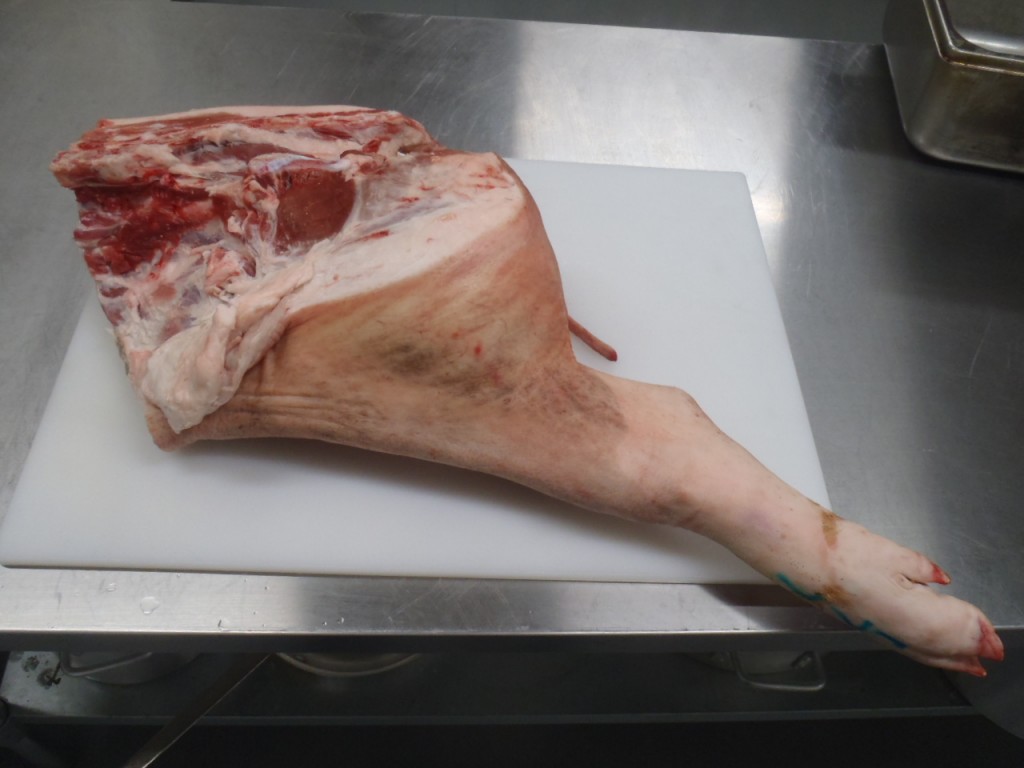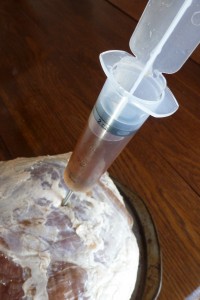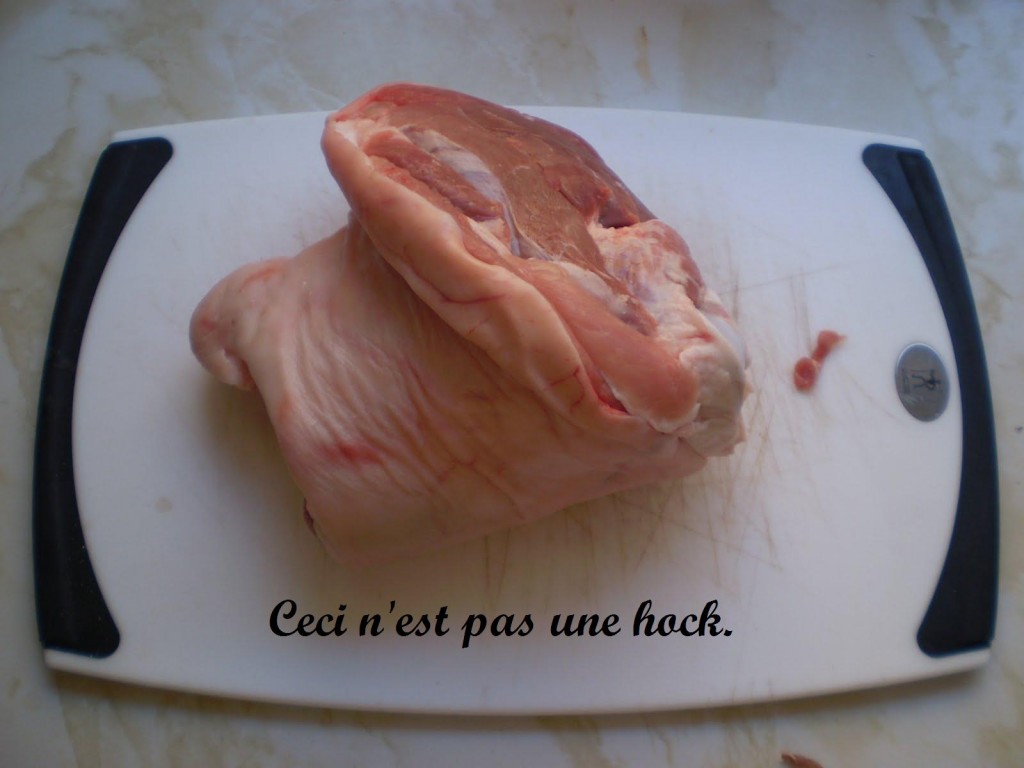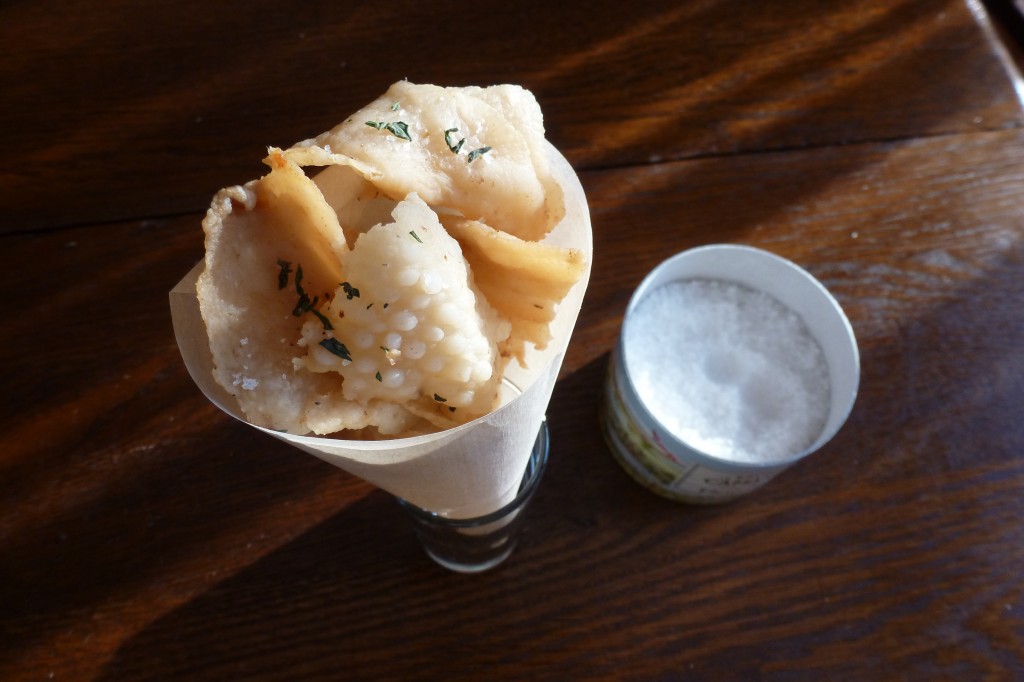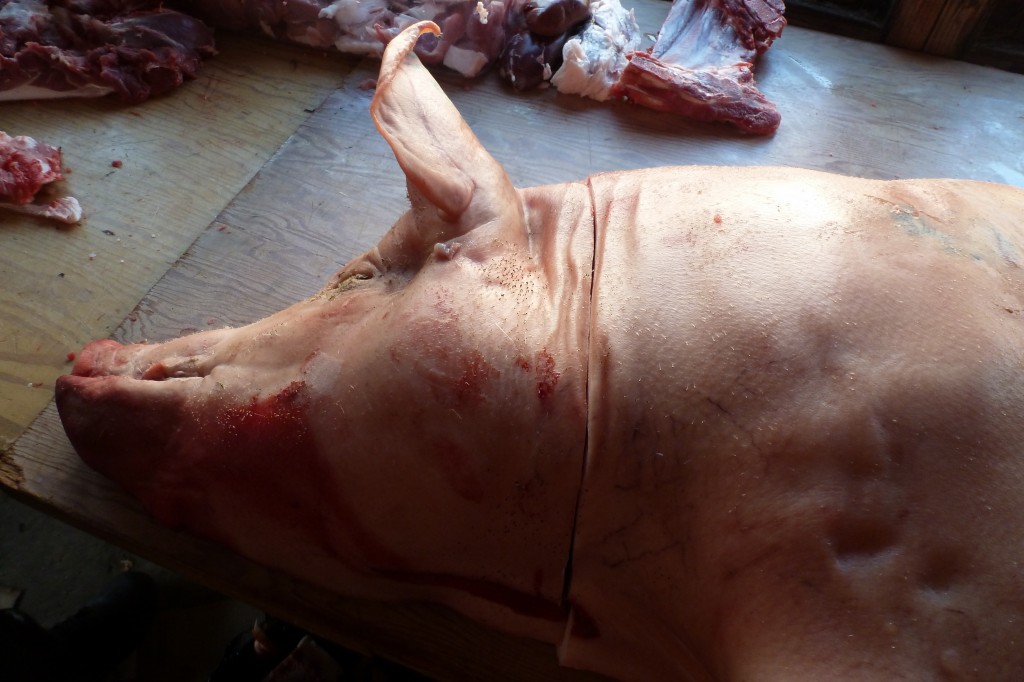Having divided the side of pork into primals, we will now deal with each primal in turn. First the leg.
This is a whole leg of pork. In the Austrian style, it was removed so that the entire hip bone was left within. (In North America, the pig is usually divided so that part of the hip remains on the loin.) Since the sirloin is defined as the loin section where the hip bone is, the entire sirloin is also still attached to this leg. But we’ll talk about that later.
First we remove the trotter. The joint between the foot and the hock is a bit funny. On the lower, hind side of the joint there is a long … Continue reading.
